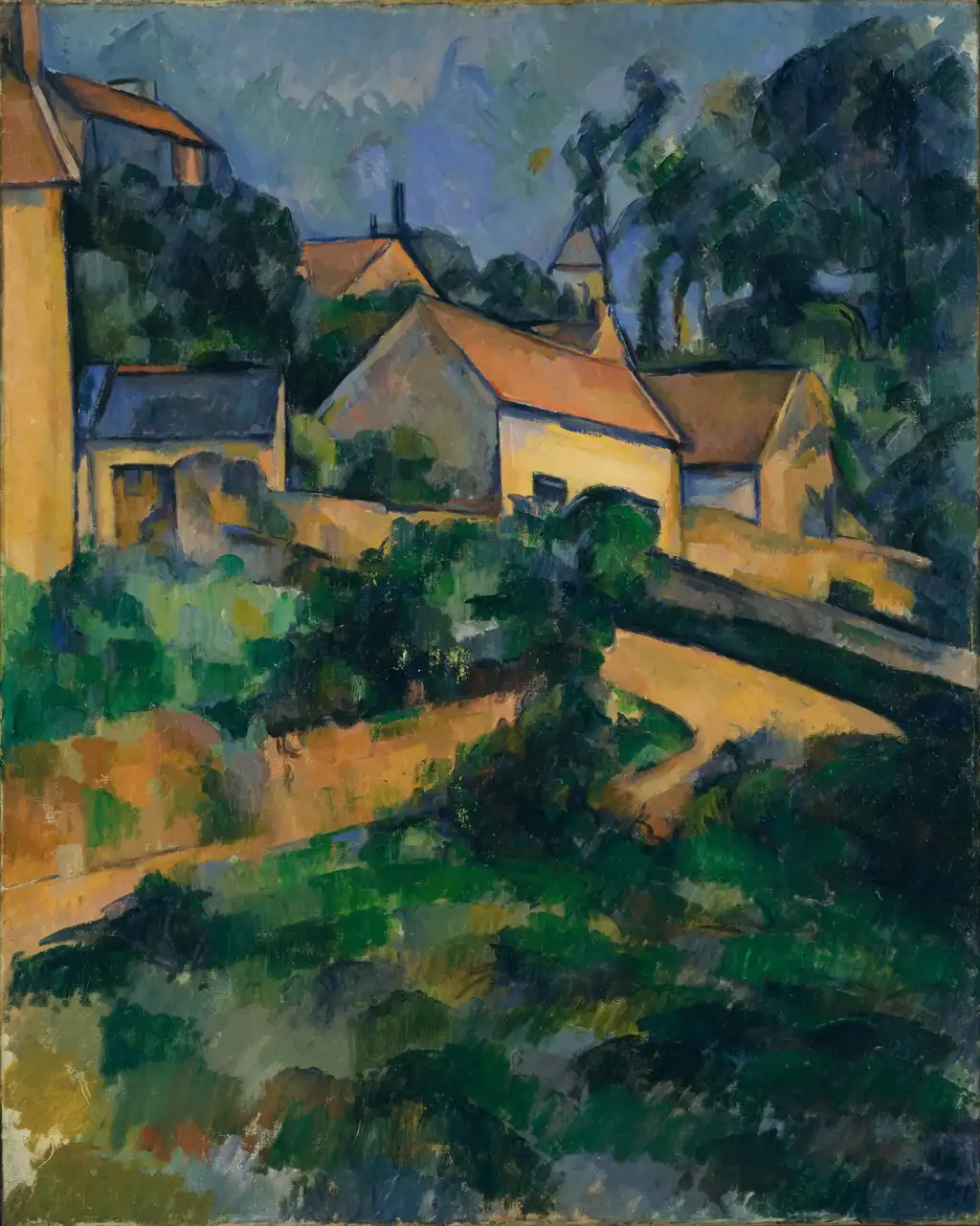As the 19th century folded into the pages of history, the art world found itself at the threshold of a new era, with Paul Cézanne leading the charge. “La Route tournante à Montgeroult,” painted in 1898, stands as a remarkable testament to Cézanne’s pivotal role in shaping the future of visual art. This masterpiece not only captures the timeless beauty of the French countryside but also symbolizes the turning point from traditional to modern art.
Cézanne’s Vision: Cézanne’s unique perspective on the act of painting was rooted in his desire to bring order and structure to the natural world. “La Route tournante à Montgeroult” is a compelling example of this endeavor. The composition features a winding road that draws the viewer’s eye into the depth of the landscape, demonstrating Cézanne’s innovative approach to perspective and space.
The painting exhibits Cézanne’s departure from the Impressionists’ preoccupation with the transient effects of light and color. Instead, he chose to focus on the enduring aspects of his subjects, seeking to capture their underlying essence. The application of color and the careful construction of form in “La Route tournante à Montgeroult” reveal Cézanne’s unique blend of observation and imagination.
Technique and Influence: The technique Cézanne employed in this work—a combination of careful, geometrical construction and loose, expressive brushstrokes—foreshadows the radical experiments of the 20th-century avant-garde. His brushwork is almost tactile in its effect, and the deliberate strokes serve as structural elements, imbuing the scene with a profound sense of solidity and volume.
Cézanne’s approach to painting went on to influence a multitude of artists, and the echoes of “La Route tournante à Montgeroult” can be seen in the Cubist landscapes of Picasso and the color planes of Matisse. The work embodies Cézanne’s quest to understand and depict nature through an analysis of form and color, an endeavor that laid the foundations for abstract art.
The Artistic Path: The winding road in “La Route tournante à Montgeroult” is emblematic of Cézanne’s own artistic journey, characterized by constant evolution and exploration. This journey also mirrors the broader trajectory of art history at the turn of the century, as painters began to explore new territories beyond the boundaries of representational art.
Cézanne’s Legacy: “La Route tournante à Montgeroult” is not merely a landscape painting; it is a landmark of art history. Through this single canvas, Cézanne invites us to witness the birth of modern art. His work transcends time, remaining ever-relevant as it continues to inspire and challenge contemporary artists and art enthusiasts alike.
In focusing on Cézanne and his indelible mark on the canvas of art history, we honor the mastery of an artist who was not only ahead of his time but also profoundly shaped the times to come. “La Route tournante à Montgeroult” stands as a proud monument to Cézanne’s enduring influence, a painted prophecy of the innovative art that would follow in his wake.


Leave a Reply